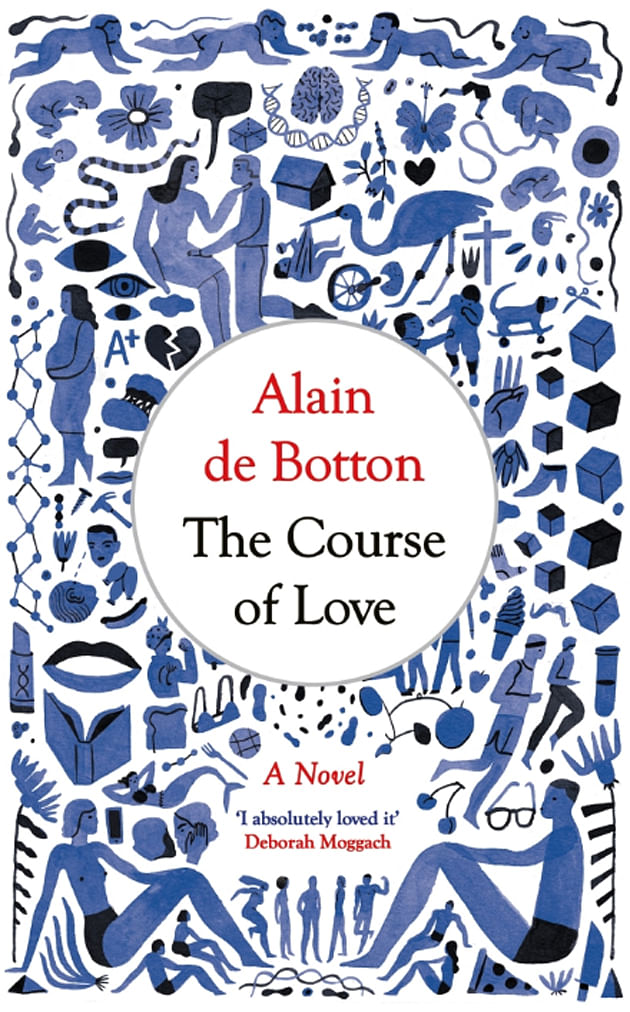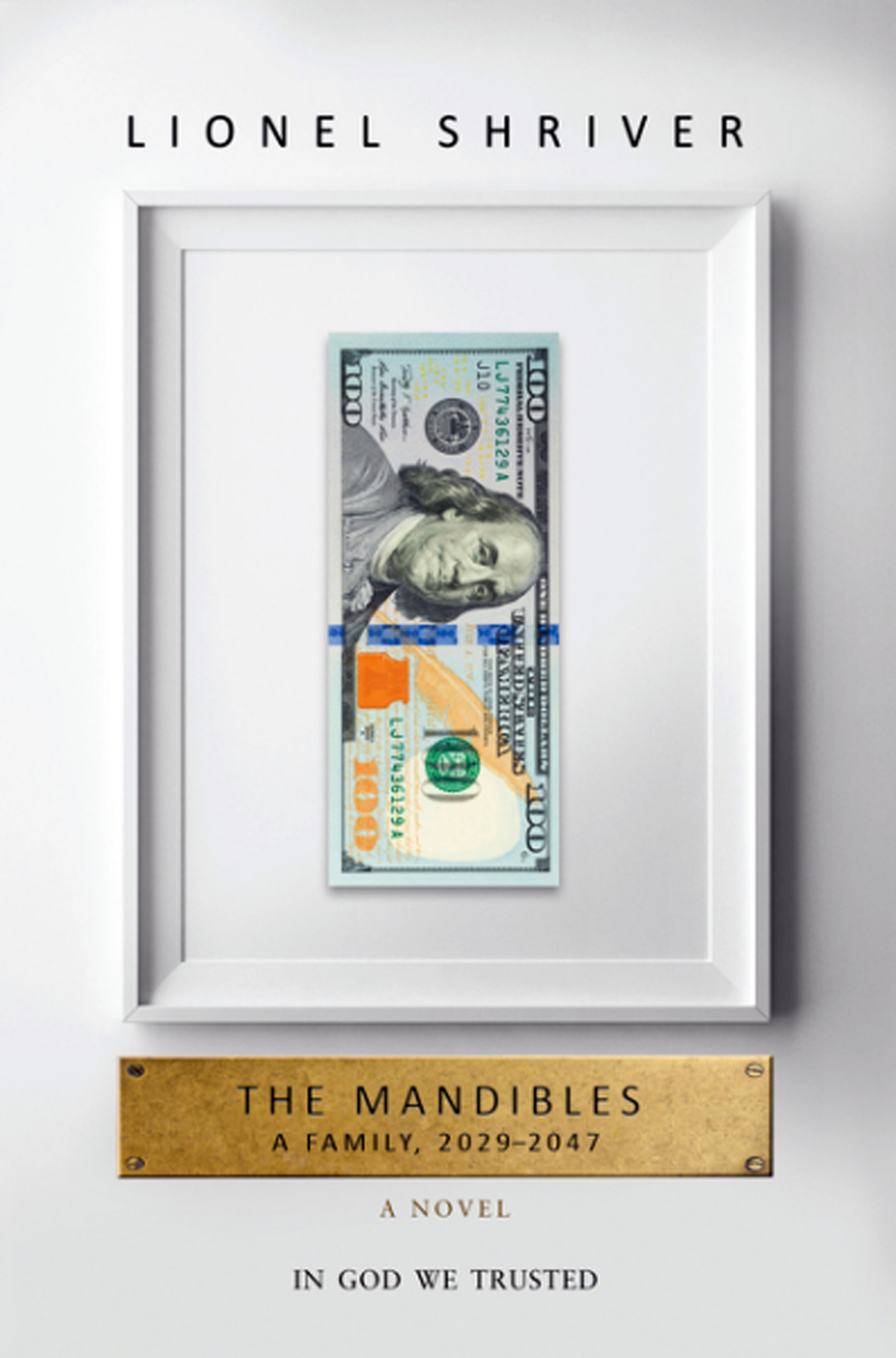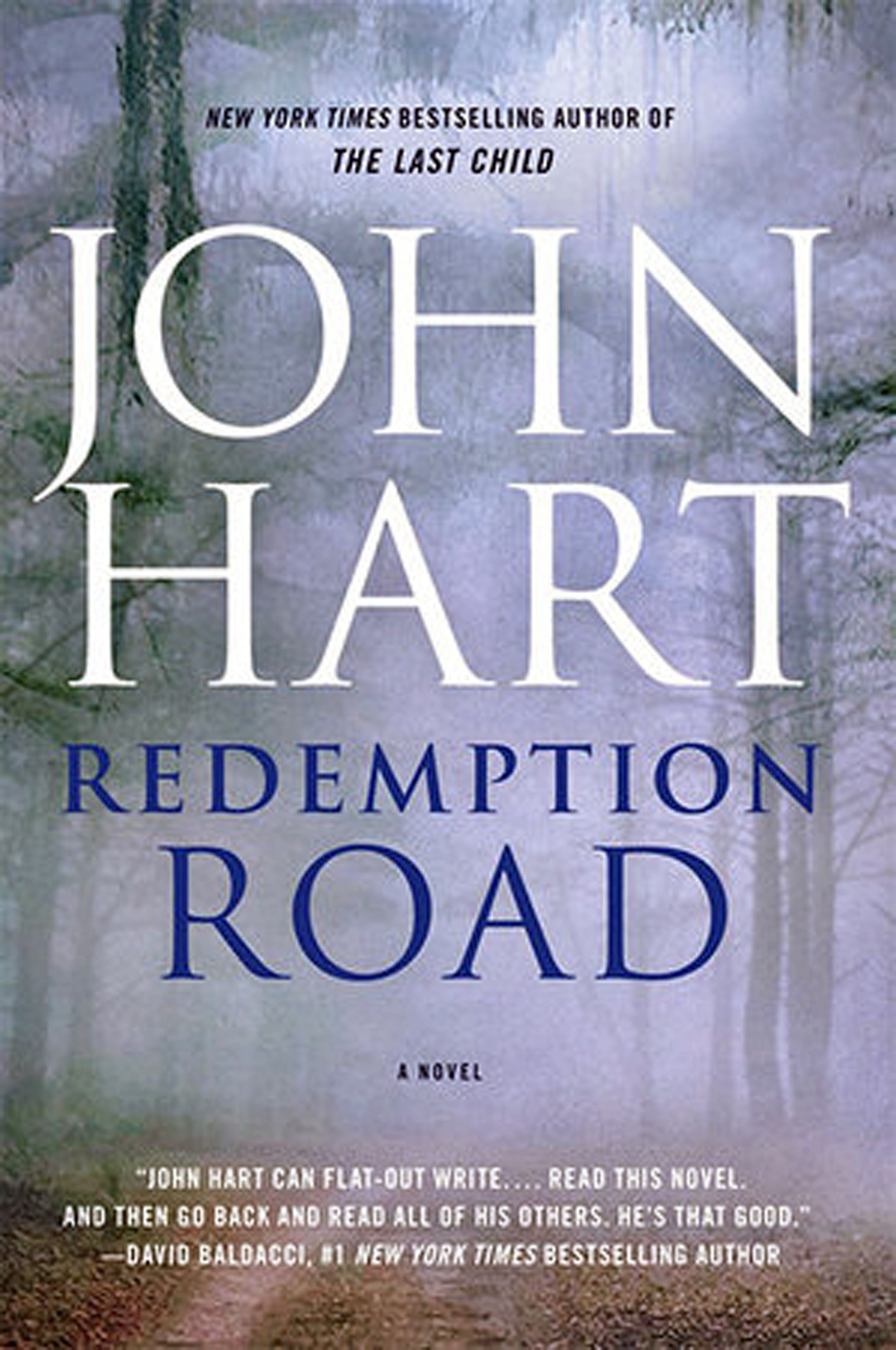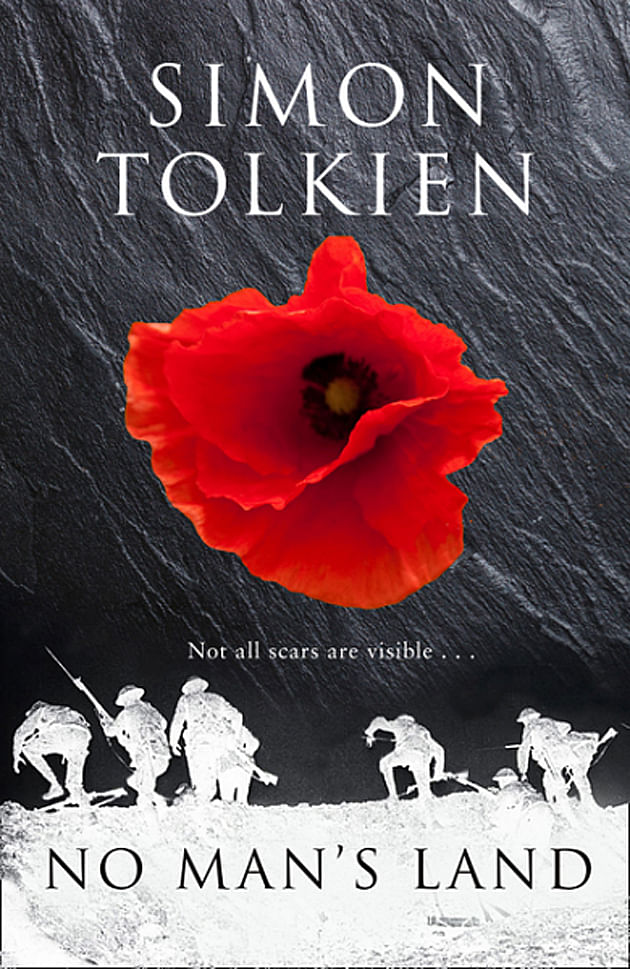Book Of The Month
Scars of the slave trade
Yaa Gyasi's stunning debut novel is an unflinching look at the dark history of slavery in Africa and America

FICTION
HOMEGOING By Yaa Gyasi
Alfred A. Knopf/ Paperback/ 305 pages/ $29.96/MPH Bookstore/ 4.5 stars
Whisked away from her Fante village in 18th-century Ghana, the beautiful Effia marries a British governor and starts a new life of luxury in the Cape Coast Castle, a British fortress.
But in the dungeons beneath her, an Asante woman, Esi, waits knee- deep in waste for ships that will sail her and her fellow captives into slavery across the ocean.
Their lives will continue to hurtle on in vastly different directions. They have never met and will never meet. Effia and Esi are, after all, half-sisters - they share the same mother but their fathers are from different tribes - cursed to pass each other by.
Before her capture, Esi is told by her family's housegirl: "In my village, we have a saying about separated sisters. They are like a woman and her reflection, doomed to stay on opposite sides of the pond."
It is a prophecy that drives Homegoing, 26-year-old Yaa Gyasi's stunning debut novel on the horrors of the slave trade and the scars it leaves on entire generations.

While Effia and her descendants remain for the most part bound to Africa, haunted by their connection to the slave trade, Esi is sold as a slave in America, where her descendants find themselves cut off from their motherland and shackled instead to the whims of a country they can never quite call home.
Homegoing was sold for at least US$1 million (S$1.35 million) and it is clear why. With prose pared to perfection, Gyasi's novel is an unflinching look at the dark history of slavery in Africa and America, fiercely political and personal all at once.
In 300 pages, the author, who was born in Ghana and schooled in the United States, straddles two continents, wades through about 250 years of history and speaks through the rich and varied voices of 14 characters over seven generations.
Homegoing is a novel daring in its panaromic range and reach, and vivid in its duality: black and white, rooted and rootless, African and American, and - most arresting of all - fire and water.
In Gyasi's book, the two elements both heal and destroy. Homegoing opens with fire: After giving birth to Effia, her housegirl mother flees the Fante master who raped her. She sets fire to his compound, giving herself a new lease of life.
But Effia's descendants will be stalked by fire. One is driven mad by dreams of fire "shaped like a woman holding two babies to her heart", another left disfigured by it.
Water, meanwhile, brings the novel to a close.
Even as the ocean presents shelter for some - the ports were one of the few places free blacks in America could turn to for work, and one of Effia's grandchildren, on a trip back home from her studies in America, wades through the waters of Ghana with her grandmother ("their summer ritual, her grandmother reminding her how to come home") - it is muddied with the legacy of slavery.
Marcus, the first of Esi's descendants to find himself back in Ghana, contemplates the ocean near Cape Coast Castle: "When he was young, his father told him that black people didn't like water because they were brought over on slave ships. What did a black man want to swim for? The ocean floor was already littered with black men."
These black men were captured and traded by other black men too, and Gyasi does not shy away from dwelling on the hand both blacks and whites had in slavery.
Even as the Europeans invaded West Africa in search of human bodies, the African tribes responded to skyrocketing demand by raiding rival tribal villages and kidnapping villagers to sell into bondage.
Gyasi has written a tightly plotted novel, with the 14 characters getting just 20 to 30 pages each. She makes it work: Each chapter is compact but revealing, and shadows of ancestors past drift in and out, bringing with them their hopes, histories and burdens.
But it is in the African chapters that Gyasi truly shines. They are rich with ritual and tradition, exploring tensions between personal and communal identity.
Each chapter presents a full- bodied character working through his struggles, with key points in West Africa's history - the burgeoning slave trade, the emergence of cocoa as a miracle crop, the arrival of missionaries, independence - providing a terse backdrop.
In contrast, the characters in the American chapters can be quite thin. They feel less like people grounded by motives and ambitions, but convenient landmarks in America's history of slavery.
One character marks the enactment of the Fugitive Slave Act in 1793, which resulted in free blacks being kidnapped and enslaved, while another tells the story of the Great Migration that had six million African Americans moving out of the American South to the North in the 1900s.
With the recent uptick in racial violence in America, Homegoing is a sobering read and a reminder that some shackles, even when broken, leave wounds that never quite heal.
Slavery has left its clawmarks in America. We see its echoes in the deep-seated prejudices that still rear their heads and in the surge of black writers reclaiming their voices now to ensure past injustices do not go forgotten.
As one of Gyasi's characters notes, enslavement is like a "fisherman casting a net into water".
"He keeps only the one or two fish that he needs to feed himself and puts the rest in the water thinking that their lives will go back to normal. No one forgets that they were once captive, even if they are now free."
If you like this, read: The Warmth Of Other Suns: The Epic Story Of America's Great Migration by Isabel Wilkerson (Random House, 2010, $27.79, Books Kinokuniya), a gripping look at the migration of African Americans out of the southern United States in pursuit of a better life. The book, which was based on interviews with more than 1,000 people, won the 2010 National Book Critics Circle Award for Nonfiction.
FICTION
THE COURSE OF LOVE By Alain de Botton
Penguin Random House/Paperback/222 pages/ $29.91/Books Kinokuniya/ 4 stars

If you think you have married the right person or that your soul mate is out there somewhere, think again.
According to philosopher and author Alain de Botton, the idea of a perfect match is utter baloney.
Instead, "marrying anyone, even the most suitable of beings, comes down to a case of identifying which variety of suffering we would most like to sacrifice ourselves for", he writes in his new novel, The Course Of Love.
It has been over 20 years since de Botton wrote fiction, the last being Essays In Love, about two people who meet on a flight.
His new novel charts the relationship between Beirut-born architect Rabih and Scottish municipal surveyor Kirsten.
As they progress from boyfriend-girlfriend to married couple to parents, de Botton inserts himself into the text, switching between omniscient narrator and the couple's therapist.
The author uses the third person narrative as a running storyline against which he injects a philosophical commentary - in italics - scrutinising each milestone or mundane matter the couple encounter, be it having kids or buying glassware from Ikea.
In a chapter titled Sulks, de Botton explains to somewhat hilarious effect that it is a "privilege to be a recipient of a sulk". It means "that the other person respects and trusts us enough to think we should understand their unspoken hurt" and is "one of the odder gifts of love".
These constant interruptions can get tiresome, but thankfully, the stories of the characters provide some relief as they serve as case studies of theories of psychology.
For example, as the couple encounter one rough patch after another, de Botton introduces the attachment theory, which attempts to explain relationships by tracing back to the individual's early years. He says Rabih and Kirsten each represent the two major camps: the "avoidant" or "anxious" attachment type.
Though at times the novel reads more like a self-help guide to love, it still works, as readers are given several opportunities to see themselves in the characters.
After all, de Botton's hard truths give refreshing insights into love and marriage, topics relevant to most people. Like he states more than once in the novel, "love is a skill rather than an enthusiasm".
If you like this, read: A Lover's Discourse: Fragments by Roland Barthes (Hill & Wang Pub, 2010, $25.70, Books Kinokuniya). The French philosopher compiles a list of "fragments" associated with love and examines each in detail from a lover's perspective.
Gurveen Kaur
FICTION
THE MANDIBLES: A FAMILY, 2029-2047 By Lionel Shriver
HarperCollins/Paperback/416 pages/$29.96/ Books Kinokuniya/ 3.5 stars

The world population has crossed the 10-billion mark, the United States economy is in a tailspin and a blustering China has annexed America's stalwart ally Japan.
This scenario is not the likely aftermath of a Donald Trump presidency, but the setting of American author Lionel Shriver's 12th and latest novel.
Given that she has tackled topics such as the failings of the American healthcare system (So Much For That, 2010) and morbid obesity (Big Brother: A Novel, 2013) in her previous works, it is no surprise she has now trained her crosshairs on America's bloated national debt.
The result is a grim yet gripping cautionary tale that is burdened by overwrought writing.
The Mandibles are a white upper- class family that wind up on the verge of bankruptcy in a 2029 economic meltdown caused by the bancor, a new global currency introduced by a band of foreign countries to tank the greenback.
Shelter worker Florence and her Hispanic nature guide partner Esteban, who eke out a modest living, are suddenly beset by dispossessed family members crowding their tiny home in New York.
Among them are her therapist sister Avery and brother-in-law Lowell, a laid-off economics professor who hangs on stubbornly to his papers and obsolete theories.
This unflattering picture extends to all the Mandibles, who cling to material possessions long after they become worthless.
Shriver holds them up as a mirror for modern-day readers to see how much of themselves is defined by what they have, and so often tied to money, "an inescapable contaminant", according to one character.
The batty, exercise-obsessed Mandible grandaunt Nollie, for instance, refuses to surrender boxes of her novels, once best- sellers back in the day when the written word mattered.
Examining a cheaply printed dollar bill one day, Florence feels "surprised at the depth of her sorrow... The soft green tender was bound up with her experience of loss and gain, achievement and inadequacy, benevolence and malice".
Her precocious son Willing becomes the family's breadwinner - he has no qualms about looting other homes for supplies and snatching groceries in the supermarket.
Shriver subverts modern society - once the power structures held together by money and greed fall away, humankind reverts to primal mode. Here, a child's survivalist pragmatism wins out over his supposed role model's civilised compassion.
The family's spiral into penury is dramatic. Avery's daughter Savannah turns to prostitution, while the rest of the family is forced out of the house in the dead of winter by a gun-toting neighbour. The first part of the book closes in the wake of an abrupt and grisly death.
Part two sees Willing and Nollie venturing into the seceded state of Nevada, although the ending feels a little too neat.
Shriver is also prone to verbosity, a trait which rears its head in the exhausting, jargon-filled economics debates that her characters engage in.
At one dinner, two teenagers debate the merits of currency, tossing out terms such as "promissory notes".
From the US to Venezuela, Shriver's eerily prescient portrait of economic dystopia is one occurring all over the world today.
It is a pity, then, that in this case, fact does not necessarily make for the most compelling fiction.
If you like this, read: Infinite Jest by David Foster Wallace (Little, Brown, 1997, $31.69, Books Kinokuniya). An immense, complex work of dystopian fiction set in North America that tackles addiction and entertainment in the modern age through the lives of addicts in a halfway house and athletes at a sporting academy.
Lee Jian Xuan
FICTION
THE LUBETKIN LEGACY By Marina Lewycka
Fig Tree; Penguin/Paperback/358 pages/$29.91/ Major bookstores/ 3.5 stars

Can a novel about London property prices and bedroom tax be funny? Yes, if the material is in the hands of Marina Lewycka, known for her best-selling debut novel A Short History Of Tractors In Ukrainian. The characters in her latest book, The Lubetkin Legacy, are typical Londoners, preoccupied with the city's increasing unaffordability for ordinary folk.
At the start of the novel, 82-year-old Lily Lukashenko says to her son Berthold after she is warded in hospital: "It's global capitalism that done this to me, son." To which Berthold replies, "It's probably just sherry, mum."
He is a former theatre actor in his 60s who takes seriously the fact that he shares the same birthday as George Clooney, but not the same order of fame and looks. Clooney's name crops up frequently, often when Berthold is feeling sorry for himself.
After Lily's death, he is petrified that he will be evicted from the council flat. It is on the top floor of Madeley Court, a residential block built during the heyday of post-war public housing, designed by architect Berthold Lubetkin, a pioneer of Modernist architecture in the 1930s.
Lily named Berthold after Lubetkin because she claimed that he was an old flame and that he had given her the flat.
To prevent the town council from evicting him, Berthold asks Inna, a flamboyant Ukrainian woman in the neighbouring bed in his mother's ward to move in with him and pretend to be Lily.
Apart from Berthold, the novel features another narrator, a new tenant in Madeley Court, 23-year-old Violet, who came to England from Kenya when she was eight. At the start of the novel, she has just moved from Warwick to London to start her job as a trainee account manager in a multinational corporation.
After encountering the morally muddy waters of global resource management, Violet chooses to join a non-governmental organisation back in Nairobi. Before she makes the move, she campaigns with Madeley Court residents to oppose the authority's decision to chop down the cherry trees in front of the flats.
The two main lines of plot, one in London and the other in Kenya, ultimately end up going off on separate trajectories that threaten to split the novel into two. This is a result of Lewycka's desire to explore different kinds of moral and social bankruptcy in two cities. The alternating narrative viewpoints do not intertwine neatly after the midway point of the book, which gives the impression of a splitting of attention. But this does not detract from the strong social conscience that underpins it.
In an interview with a British newspaper last year, Lewycka said: "I like to be cheered up by things and it's not because I think the world is okay, it's because I think the world is so awful."
Behind the humour lies her criticism of a government that has lost sight of the ideals that formed the bedrock of social security in post-war Britain.
My pre-Brexit reading was that the novel celebrated architecture that had been designed not only to put a roof over people's heads, but also to bring people of diverse cultures and backgrounds together in London. Re-reading the novel after Brexit, with new recognition of the fragility of communities made possible by globalisation, the depiction of multicultural London working together to save its cherry trees seems like images from a lost age of innocence.
If you like this, read: Capital by John Lanchester (Faber & Faber, 2013, $30.68, Books Kinokuniya). The residents along Pepys Road in London have prospered from the property boom in London in recent years. When they begin to receive anonymous postcards saying, "We Want What You Have", the question as to who has sent these cards and what this might mean is played out against the threats of terrorism and the financial crisis of 2008.
Yeo Wei Wei
THRILLER
REDEMPTION ROAD By John Hart
Hodder & Stoughton/Paperback/423 pages/$29.95 including GST/Books Kinokuniya/ 3 stars

American thriller novelist John Hart's tale is gripping and infuriating in equal measure.
First, the good news: This is your classic summer beach page-turner, doused with plot twists and spiced with bloody gore.
The protagonist is the prophetically named detective Elizabeth Black who, when the book opens, is in her police department's bad books. She has rescued a young white kidnap and rape victim (yay), but also pumped 18 bullets into the latter's two black attackers (nay).
The result - she is on suspension, the media sharks smell blood and a couple of federal investigators are on her trail, seeking to make an example of her.
In the meantime, Black's ex-cop partner Adrian Wall (another prophetically named character) has just been released from prison for a murder conviction and Black is irresistibly drawn back to Wall, with whom she was in love at one point.
But things get complicated when a young woman is murdered in the exact fashion of the crime for which Wall was convicted. And the police department is out to pin Wall for the new murder, except that the cops have as many skeletons as the so-called criminals in the story.
So far, so promising.
Read superficially, the competing motivations of various characters and plot twists will keep a reader turning the pages, wondering what will come next.
Now, the bad news. For the seasoned thriller reader who is looking for something beyond cheap thrills, this book offers threadbare pickings.
For women readers, the book will be especially unsettling because while Black is supposed to be the heroine of the piece, Hart resorts to some typically cliched "women in peril" tactics which make her character feel more like an author's convenient puppet than an active protagonist that draws the reader's empathy. Some of the "fridging" narrative tactics - in which female characters are put in mortal peril for the sole purpose of advancing the plot - feel particularly egregious.
It does not bode well when the most engaging character is a secondary character, an elderly lawyer named Faircloth "Crybaby" Jones who exudes Southern charm and chutzpah.
If you like this, read: Ritual by Mo Hayder (Grove Press, 2008, US$14 or S$18.80, Amazon.com), the third in her series focusing on detective Jack Caffery and the first to introduce Sergeant Flea Marley, a thoroughly flawed but engagingly tough female detective who becomes Caffery's love interest. Marley is a product of her past, but never a mere victim.
Ong Sor Fern
FICTION
NO MAN'S LAND By Simon Tolkien
Harper Collins/Hardback/566 pages/$43.91/ Books Kinokuniya/ 4 stars

It has taken years for Simon Tolkien to step out of his illustrious grandfather's shadow and his latest novel leaves no doubt that he has done so at last.
The bittersweet coming-of-age tale that is No Man's Land is inspired by J.R.R. Tolkien's experiences during World War I, but stands on its own.
Simon Tolkien's fifth novel is peopled with a rich cast of sympathetic characters and it is clear that solid work has gone into researching the attitudes and behaviours of the early 20th century.
It tells the story of young Adam Raine, who moves from London to a harsh mining town in north England following an accident.
There, he is outcast by the local boys, who look down on his posh city accent and aspirations to higher education.
Just as he is beginning to find acceptance among them, tragedy strikes. In the fallout, he is adopted by the mine's owner, Sir John Scarsdale, which drives a wedge between him and his new friends.
Sir John promises that Adam will be made welcome, but his son, Brice, resents Adam for usurping his place in his father's heart. He sets out to make Adam's life as difficult as possible.
The one constant in Adam's life is his friendship with the rector's daughter, Miriam, which gradually blossoms into something more.
Then World War I arrives, sweeping the characters up in its wake. Much of the action takes place in the trenches of the Somme in France and Tolkien does not shy away from depicting its horror.
Describing the soldiers' efforts to bury the bodies of their fallen comrades, he writes: "The rats screamed and ran as the burial party approached, but the flies... were so drunk from feasting that they crawled rather than flew away, leaving their white maggot progeny behind, rustling like silk as they wriggled against each other inside the wounds."
In No Man's Land, good fortune and calamity are often two sides of the same coin.
Just as the disaster in Adam's life improves his prospects, a "Blighty wound" in wartime can get a soldier sent away to recuperate without being serious enough to leave lasting damage. On the flip side, rifles stuck into the ground alerting medics to injured men lying on the battlefield also serve as targets for enemy snipers to aim at, picking the soldiers off one by one.
For Tolkien, the impact that war has on the individual psyche also parallels the destruction that industrialisation wreaks on the natural landscape.
When Adam travels to the mines, he first sees the countryside - "a vision of loveliness" - before turning a corner into the ugliness of the mining town, in a change that is "jarring - almost violent".
Similarly, the war leaves him physically healthy but emotionally scarred. While healing is possible, he quickly learns - as English society is doing in the wake of the war - that certain things cannot be undone and that nothing is quite the same as before.
If you like this, read: Captain Corelli's Mandolin by Louis de Bernieres (Vintage, 2015 reprint, $16.15, Books Kinokuniya) , a funny, sad tale set during the Italian occupation of Greece in World War II.
Linette La
FICTION
THE PIER FALLS AND OTHER STORIES By Mark Haddon
Jonathan Cape/Paperback/321 pages/$26.05/ Books Kinokuniya/ 4 stars

British writer Mark Haddon is best known for his 2003 debut The Curious Incident Of The Dog In The Night-Time, told from the point of view of an autistic boy.
His recent works were still domestic tragicomedies featuring dysfunctional families, although they moved into more adult territory, such as in A Spot Of Bother (2006) and The Red House (2012).
The Pier Falls anthology of nine short stories appears to be more experimental in style, as Haddon showcases his creativity by tackling a wider range of topics than he manages in his novels.
In the stories, there is a disaster, a failed space mission, a supernatural encounter, a jungle expedition gone awry, among other things.
Haddon almost seems to be having fun taking the reader on a roller-coaster ride through his macabre mind. Even his publishers, on the inside cover, note that "his imagination is even darker than we had thought".
In the title story, a British seaside pier collapses and the narrative is a blow-by-blow account of the carnage and mayhem.
What makes the read even more gripping - and disquieting - is the almost journalistic tone Haddon adopts. Almost like a ticker tape on a rolling television news story, raw statistics are inserted. "An hour and a half. Sixty-four dead."
His detached narrative also helps drive home the impact: "Nine people remain buried under wreckage. The authorities know about eight of these. The ninth is a girl of 15 who ran away from her home in Stockport six months ago.
"Her parents will never connect her to the event in the newspaper and will spend the rest of their lives waiting for her to come home."
This story is only the tip of an iceberg of the anthology of eerie yet mesmerising tales.
My favourite is The Woodpecker And The Wolf, about a mission to Mars that goes horribly wrong.
Haddon loses the scientific mambo jambo in favour of an unflinching look at the fragility of humanity and a mother's undying love for her child.
Other memorable stories include Wodwo, about a haughty television man who learns his place in a ghastly Christmas Eve encounter, and Bunny, about a down-and-out woman who falls for a man who is unable to get out of bed because of his obesity.
Through them, Haddon demonstrates that he is a master at building tension through vivid characters and chronicling seemingly insignificant moments that have reverberating repercussions.
If you like this, read: A Spot Of Bother by Mark Haddon (Vintage 2007 reprint, $17.07, Books Kinokuniya), a dark comedy about George, a hypochondriac retiree who is convinced a skin lesion on his hip is fatal, and his dysfunctional family.
Walter Sim
Join ST's Telegram channel and get the latest breaking news delivered to you.
A version of this article appeared in the print edition of The Sunday Times on July 03, 2016, with the headline Scars of the slave trade . Subscribe

